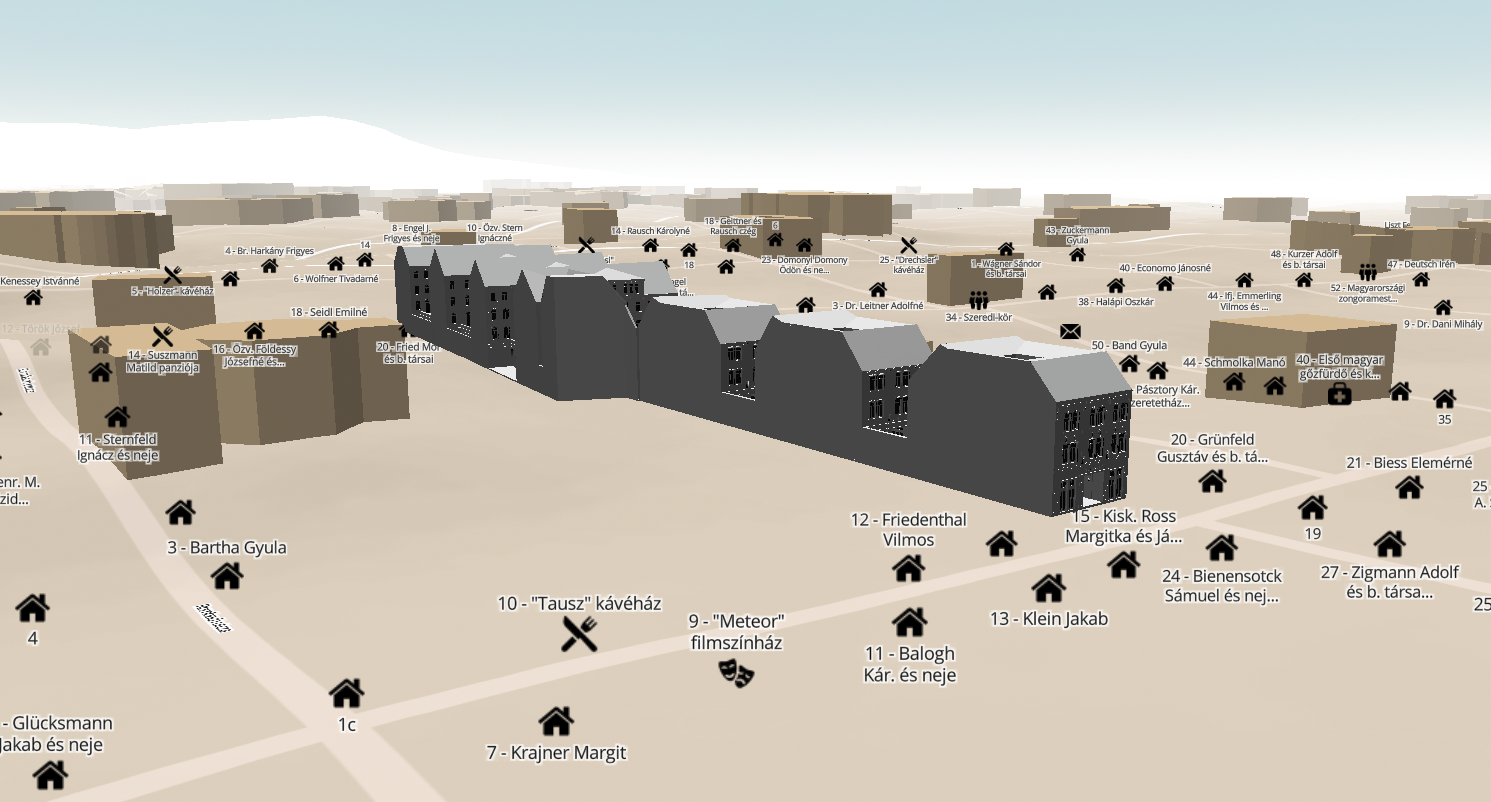The paper The Budapest Time Machine recently published in the Croatian Archives’ Bulletin Archiv Vjesnik by István Kenyeres (Director of the Budapest City Archives) outlines the evolution of the Budapest Time Machine.
Visionary Status and International Significance
Since its inception, the Budapest Time Machine has consistently held a visionary status, establishing itself as a flagship within the international Time Machine initiative. Initiated by the Budapest City Archives in 2017, its underlying database draws from the Hungarian public collection portal, Hungaricana, where the Budapest City Archives continuously releases a substantial volume of digitized archival sources such as maps, blueprints, and notarial deeds.
Interface Features and Historical Mapping
The interface of the Budapest Time Machine, first developed in 2017, offers digitized and georeferenced maps of Budapest. These maps are synchronized through GPS coordinates and showcase the city’s historical development in five distinct time periods (1837, 1872, 1908, 1916, 1938). The platform facilitates the exploration of historical documents related to buildings, including plans, land registry inserts revealing owners, and notarial deeds documenting legal and administrative transactions. Users can easily search for archival photographs and postcards by address or by navigating the map.
Renewal and Enhanced Functionality
A significant overhaul of the Budapest Time Machine occurred at the end of 2022, introducing a new version that consolidates data access into a single interface. Notably, this version allows users to view maps in 3D. A key innovation is the inclusion of 3D historical reconstructions for approximately 30 buildings, a collaborative effort with the University of Óbuda. The Budapest Time Machine serves as a noteworthy example of collaboration between public collections and academic research. There are plans to integrate data from non-governmental organizations (NGOs) in future iterations, further enhancing its breadth and depth.
To read the full paper, please follow the link below.
